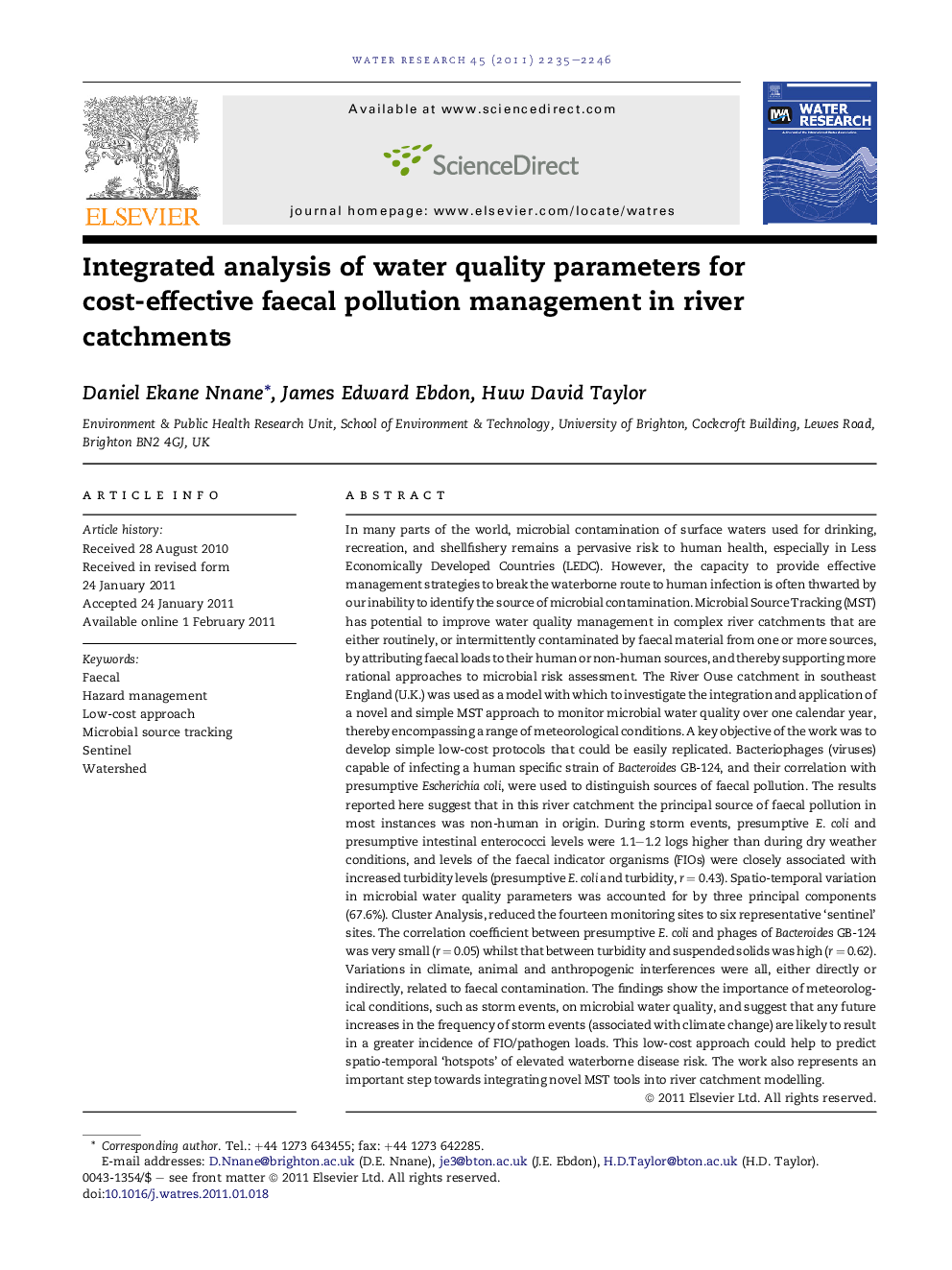| کد مقاله | کد نشریه | سال انتشار | مقاله انگلیسی | نسخه تمام متن |
|---|---|---|---|---|
| 4484318 | 1316916 | 2011 | 12 صفحه PDF | دانلود رایگان |

In many parts of the world, microbial contamination of surface waters used for drinking, recreation, and shellfishery remains a pervasive risk to human health, especially in Less Economically Developed Countries (LEDC). However, the capacity to provide effective management strategies to break the waterborne route to human infection is often thwarted by our inability to identify the source of microbial contamination. Microbial Source Tracking (MST) has potential to improve water quality management in complex river catchments that are either routinely, or intermittently contaminated by faecal material from one or more sources, by attributing faecal loads to their human or non-human sources, and thereby supporting more rational approaches to microbial risk assessment. The River Ouse catchment in southeast England (U.K.) was used as a model with which to investigate the integration and application of a novel and simple MST approach to monitor microbial water quality over one calendar year, thereby encompassing a range of meteorological conditions. A key objective of the work was to develop simple low-cost protocols that could be easily replicated. Bacteriophages (viruses) capable of infecting a human specific strain of Bacteroides GB-124, and their correlation with presumptive Escherichia coli, were used to distinguish sources of faecal pollution. The results reported here suggest that in this river catchment the principal source of faecal pollution in most instances was non-human in origin. During storm events, presumptive E. coli and presumptive intestinal enterococci levels were 1.1–1.2 logs higher than during dry weather conditions, and levels of the faecal indicator organisms (FIOs) were closely associated with increased turbidity levels (presumptive E. coli and turbidity, r = 0.43). Spatio-temporal variation in microbial water quality parameters was accounted for by three principal components (67.6%). Cluster Analysis, reduced the fourteen monitoring sites to six representative ‘sentinel’ sites. The correlation coefficient between presumptive E. coli and phages of Bacteroides GB-124 was very small (r = 0.05) whilst that between turbidity and suspended solids was high (r = 0.62). Variations in climate, animal and anthropogenic interferences were all, either directly or indirectly, related to faecal contamination. The findings show the importance of meteorological conditions, such as storm events, on microbial water quality, and suggest that any future increases in the frequency of storm events (associated with climate change) are likely to result in a greater incidence of FIO/pathogen loads. This low-cost approach could help to predict spatio-temporal ‘hotspots’ of elevated waterborne disease risk. The work also represents an important step towards integrating novel MST tools into river catchment modelling.
Research highlights
► The principal source of faecal pollution in most instances was non-human.
► Wet weather E. coli and enterococci were 1.1–1.2 logs higher than dry weather.
► Faecal indicator organisms were closely associated with increased turbidity levels.
► Cluster Analysis, reduced the fourteen monitoring sites to six ‘sentinel’ sites.
► Rainfall, animal and anthropogenic interferences influenced faecal contamination.
Journal: Water Research - Volume 45, Issue 6, March 2011, Pages 2235–2246